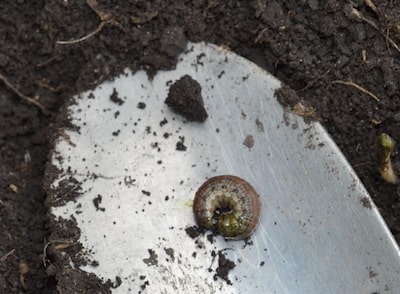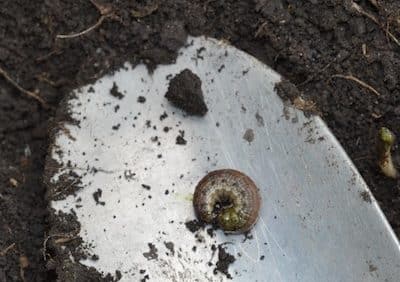Higher than normal cutworm feeding has been reported in some locations. This could be due to various factors, including the long fall, early warm spring and weed growth to provide food through these times. Here are scouting techniques to follow while inspecting canola fields for cutworms.

When to scout: Inspect seedlings every 3 to 4 days during the first few weeks of crop development, and more often if cutworms have been reported in your area.
Where: Look for bare areas, holes and notches in foliage, and plants that are wilting, toppling over or completely cut off. Bare spots will begin to appear within the field, typically on south facing slopes and hilltops where the soils are warmer and soil texture is lighter. High moisture was thought to set back cutworms, but that is not always the case.
How: Check the edges of bare areas for cut-off plants. In these suspect areas, dig a one square foot area to a depth of 10 cm and put the soil into a basin. Loosen the soil and shake it up to activate cutworms. Larvae often curl up or attempt to hide in the debris when exposed. Also look for pupae and frass (cutworm excrement) around roots as evidence. Repeat a few times throughout the field.
Action Threshold: A nominal threshold of 25-30% stand reduction has been suggested. Scout throughout the field to determine the distribution of larvae, as patch spraying is sometimes sufficient to control outbreaks. Check for green material in the gut of larvae to determine if they are actively feeding, as they will cease feeding temporarily during molting between instars. This could affect the ideal timing for control measures depending on the proportion of larvae that are not actively feeding, although residual activity of most registered products should allow for adequate control.
This article has more on how to identify cutworm species, as well as more details on scouting and management.
Spray techniques: Cutworms surface at night to do their above ground feeding, so spray as close to nightfall as possible. Since not all cutworms will surface on a single night, it may take several days before full effect of the insecticide is achieved. Use high water volumes to get good plant coverage. Most of the insecticides registered for cutworms in canola work by contact and ingestion. If not hit directly with the spray, cutworms need to ingest the insecticide. The more plant surface area covered, the more likely that cutworms will take in the insecticide.
If stand reduction is concentrated in small areas, a targeted application of a sprayer width or two around that area can be a lower cost and effective way to manage the pest compared to spraying a whole field.
Further reading
Canola Encyclopedia: Cutworm scouting techniques
Prairie Pest Monitoring Network blog
List of insecticides registered for cutworms

